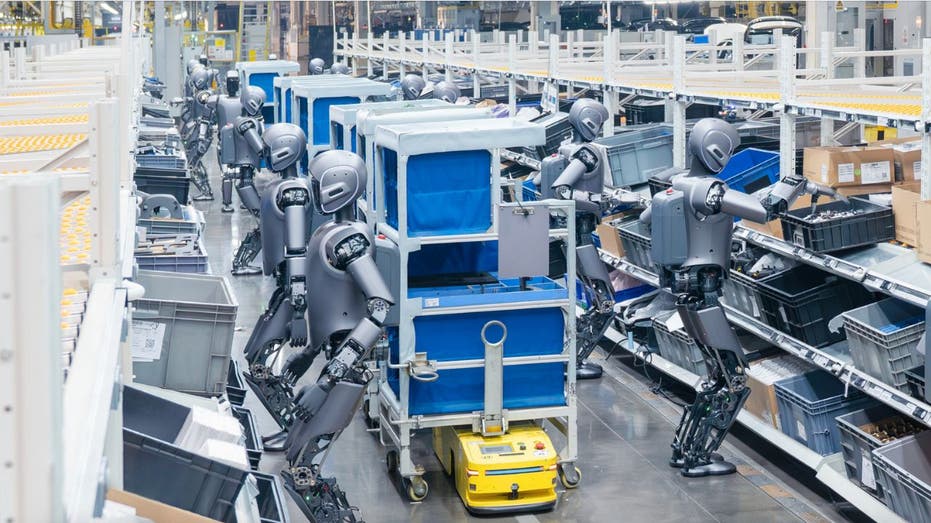Revolutionizing Car Manufacturing: The Rise of AI-Powered Swarm Robots

The automotive sector is currently experiencing a transformative evolution, primarily fueled by the integration of AI-driven humanoid robots into its production processes. UBTech Robotics, in partnership with Zeekr, has launched an innovative project where a swarm of robots collaborates to manufacture vehicles with unprecedented speed and efficiency. However, this technological breakthrough raises an important question: Is this a significant innovation or a potential threat to human jobs?
Understanding Swarm Intelligence in Robotics
Swarm Intelligence, a concept inspired by the collective behaviors observed in nature, is making its way into the realm of robotics. This approach enables multiple humanoid robots to work together harmoniously on intricate tasks. At the forefront of this movement are UBTech’s Walker S1 robots, which operate within Zeekr’s state-of-the-art 5G-enabled smart factory. These robots form a cohesive network, continually communicating to enhance their collaborative efforts.
- SteelSeries Arctis Nova Pro Wireless Review: Premium Sound, ANC, and Infinite Battery Swaps
-
Nearly One Million Patients Affected by DaVita Dialysis Ransomware Breach

-
CDC in Turmoil as Agency Faces Political and Public Pressure

- What is a Digital Signature in Blockchain: Cryptographic Security, Verification, and Applications
Key Technologies Powering the Revolution
– **BrainNet Framework**: UBTech’s proprietary BrainNet software links cloud-based and on-device intelligence, creating a “super brain” for complex decision-making and a “sub-brain” for localized control. This dual-layered approach allows for more efficient operations on the factory floor.
– **Multimodal Reasoning Model**: This advanced AI engine empowers the robots to autonomously analyze, schedule, and coordinate tasks, allowing them to adapt to the ever-changing dynamics of industrial environments.
– **Collaborative Capabilities**: These robots excel in a variety of tasks, from sorting and handling heavy components to precision assembly, demonstrating remarkable dexterity and real-time decision-making skills.
Transforming Car Manufacturing Processes
The introduction of AI-powered robots is revolutionizing the car manufacturing landscape in several critical ways. The Walker S1 robots utilize advanced vision-based perception and hybrid decision-making systems to optimize sorting tasks. They can dynamically track targets and share intelligence throughout the swarm, enhancing productivity.
However, these robots also face challenges, such as uneven load distribution and navigating complex trajectories. To address these issues, UBTech’s joint planning system allows the robots to dynamically adjust their posture and exert force, ensuring both stability and efficiency.
In tasks that require finesse, such as handling delicate materials, Walker S1 robots employ tactile sensing and adaptive control. This capability ensures precision without risking damage to components. These advanced features are already being implemented at Zeekr’s factory, where they are utilized for quality inspections and vehicle assembly, yielding remarkable efficiency and accuracy.
Broader Applications of Swarm Intelligence
The benefits of Swarm Intelligence extend beyond automotive manufacturing. Its applications also encompass logistics, healthcare, agriculture, and more. By decentralizing decision-making and optimizing resource allocation, swarm systems can enhance scalability and adaptability across various industries.
Addressing the Concerns of Job Displacement
While the integration of humanoid robots brings numerous advantages, including the mitigation of labor shortages and improved production efficiency, it also prompts valid concerns regarding job displacement. The pressing question is how to strike a balance between technological progress and its societal implications.
Experts suggest that these innovations could complement human workers rather than replace them. Robots are well-suited for repetitive or hazardous tasks, freeing humans to engage in more creative and strategic roles. Nevertheless, careful planning is crucial to ensure a smooth transition.
The Future of Human-Robot Collaboration
The automotive industry is undeniably evolving, with AI-powered robots taking a central role in manufacturing. UBTech and Zeekr are leading the charge in demonstrating how these robots can work together to enhance production speed and intelligence. Nonetheless, as we embrace these advancements, it is essential to consider their potential impact on employment. The goal should be to foster a harmonious relationship between robots and humans, where each complements the other rather than competes.
As AI-powered robots increasingly assume complex tasks in car manufacturing, we invite you to reflect on the implications. Do you believe that the advantages of efficiency and precision outweigh the risks of job displacement, or are we sacrificing human creativity for the sake of machine speed? We welcome your thoughts and insights.
For more technology tips and security updates, consider subscribing to our newsletter. Let’s explore the future of technology together!
